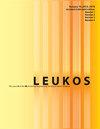Let Me Count the Light. Accounting for Intensity, Duration and Timing of Light When Predicting Sleep and Subjective Alertness in Field Studies
IF 2.6
2区 工程技术
Q2 CONSTRUCTION & BUILDING TECHNOLOGY
引用次数: 4
Abstract
ABSTRACT Throughout the day, we are exposed to light that varies drastically over time. Correct quantification of the light is important when predicting sleep and subjective alertness in the field, yet doing so, is a complex challenge. In the current manuscript, we explore the feasibility of a novel, practical method to quantify light exposure, based on the data collected in two field studies (in late spring and winter). Data include indicators of sleep, subjective alertness, and personal luminous exposure. We explored Time above Threshold (TaT) and Mean Light Timing above Threshold (MLiT) metrics, as well as their interaction, to quantify intensity, timing, and duration of light in testing not only circadian but also acute alerting effects of light in the field during office hours. For both measures, sensitivity analyses were performed across a large range of illuminance thresholds. The aim was to explore if these analyses would render indications for (a range of) effective thresholds, and to test if this alternative method of quantifying light would outperform simple averaging over specific time intervals. Despite the relatively small data set, the current approach seems promising particularly for predicting sleep: models performed slightly better than traditional models using average light exposure as predictor. More importantly, this method takes into account intensity, duration and timing, providing more detailed insights in the relation between luminous exposure and different outcome measures. We encourage this method to be explored further with larger data sets, discuss shortcomings of the current analyses and suggest potential directions for improvement.让我数一数光明。在预测睡眠和主观警觉性的实地研究中,光的强度、持续时间和时间的计算
一整天,我们都暴露在随时间变化很大的光线下。在野外预测睡眠和主观警觉性时,光的正确量化是很重要的,但这样做是一项复杂的挑战。在当前的手稿中,我们基于两个实地研究(春末和冬季)收集的数据,探索了一种新的、实用的方法来量化光暴露的可行性。数据包括睡眠指标、主观警觉性和个人光照。我们探索了阈值以上时间(TaT)和平均光照时间(MLiT)指标,以及它们之间的相互作用,以量化光的强度、时间和持续时间,不仅用于测试昼夜节律,还用于测试办公时间现场光的急性警报效应。对于这两种测量,灵敏度分析是在大范围的照度阈值上进行的。目的是探索这些分析是否能够提供(一系列)有效阈值的指示,并测试这种量化光的替代方法是否优于在特定时间间隔内进行简单平均的方法。尽管数据集相对较小,但目前的方法似乎很有希望,特别是在预测睡眠方面:模型的表现略好于使用平均光照作为预测指标的传统模型。更重要的是,该方法考虑了强度、持续时间和时间,为发光暴露与不同结果测量之间的关系提供了更详细的见解。我们鼓励用更大的数据集进一步探索这种方法,讨论当前分析的缺点,并提出改进的潜在方向。
本文章由计算机程序翻译,如有差异,请以英文原文为准。
求助全文
约1分钟内获得全文
求助全文
来源期刊

Leukos
工程技术-光学
CiteScore
7.60
自引率
5.60%
发文量
19
审稿时长
>12 weeks
期刊介绍:
The Illuminating Engineering Society of North America and our publisher Taylor & Francis make every effort to ensure the accuracy of all the information (the "Content") contained in our publications. However, The Illuminating Engineering Society of North America and our publisher Taylor & Francis, our agents, and our licensors make no representations or warranties whatsoever as to the accuracy, completeness, or suitability for any purpose of the Content. Any opinions and views expressed in this publication are the opinions and views of the authors, and are not the views of or endorsed by The Illuminating Engineering Society of North America and our publisher Taylor & Francis. The accuracy of the Content should not be relied upon and should be independently verified with primary sources of information. The Illuminating Engineering Society of North America and our publisher Taylor & Francis shall not be liable for any losses, actions, claims, proceedings, demands, costs, expenses, damages, and other liabilities whatsoever or howsoever caused arising directly or indirectly in connection with, in relation to, or arising out of the use of the Content. Terms & Conditions of access and use can be found at http://www.tandfonline.com/page/terms-and-conditions .
 求助内容:
求助内容: 应助结果提醒方式:
应助结果提醒方式:


